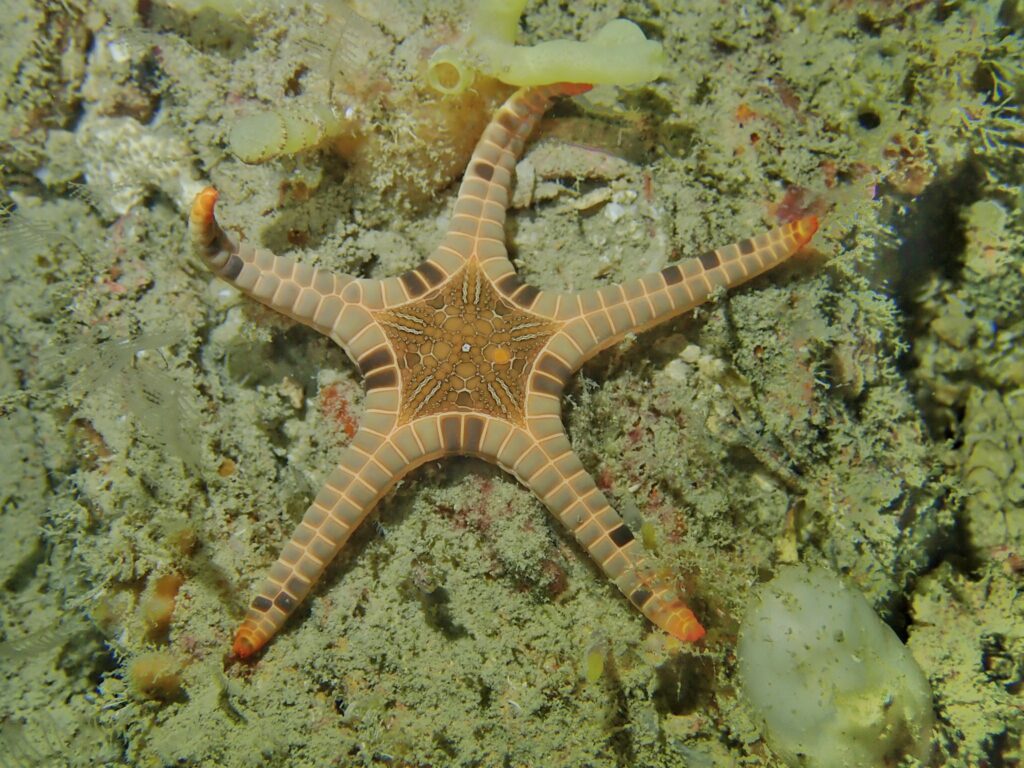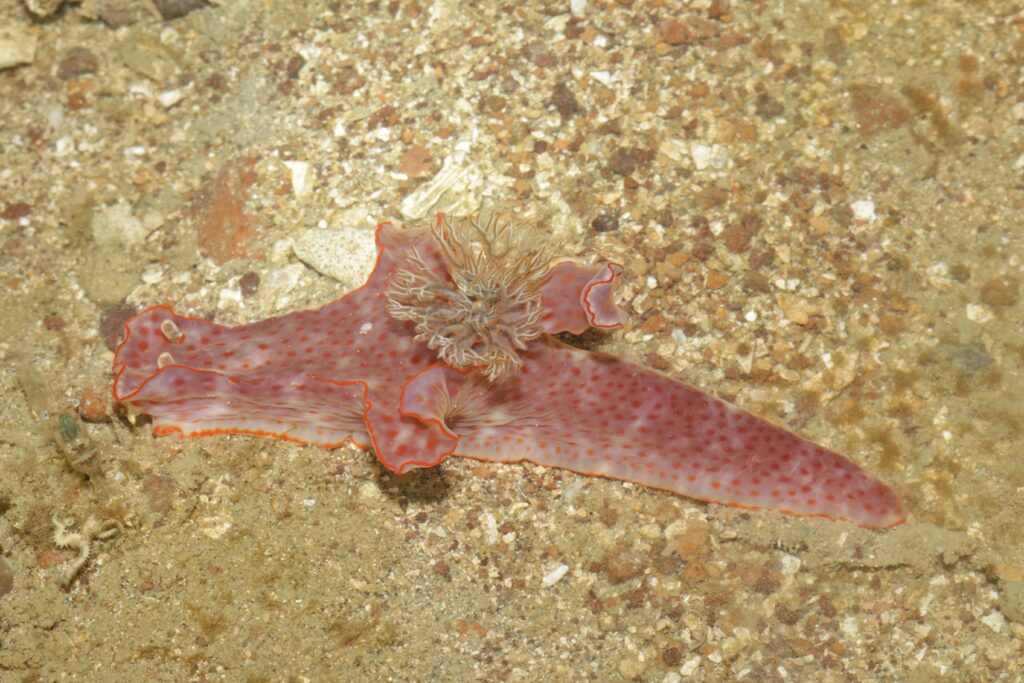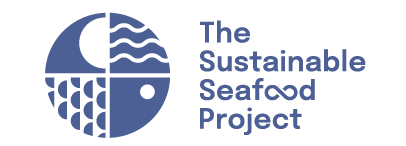The marine ecosystem is filled with beauty and poise that we would not be able to see, if not for talented nature photographers like Abel Yeo. The 28 year-old who enjoys taking photos of wildlife during his spare time was an aquaculture operations executive, an aquarist, and is now on the education team in the aquarium:
1. What sparked your interest in nature photography?
As a kinesthetic learner, I’ve always preferred using visual aids to understand, learn and appreciate things that I love. Therefore, without collecting physical items, photography is the best way of admiring and keeping a record of what I’ve observed and experienced in nature.
 Icon Sea Star(Iconaster Longimanus)
Icon Sea Star(Iconaster Longimanus)
2. What are some of your favourite locations to shoot marine creatures in Singapore?
The Southern Islands and Southern mainland shorelines have an abundance of marine habitats like coral reefs and natural rocky shores. The density of marine life there and the vibrance and uniqueness of their morphology make them interesting photo subjects.
3. What are your favourite marine creatures to shoot and why?
It’s difficult to choose because I love all marine life. But I especially look out for species that are new to me, including those of flatworms, stingrays, sea stars and crustaceans. They are amazing to capture, mostly because of their unique locomotion.
 Blue-spotted Stingray(Neotrygon Kuhlii)
Blue-spotted Stingray(Neotrygon Kuhlii)
4. Has your experience as an aquarist helped in your journey as a marine photographer?
Marine animal observation is one of the essentials of being an aquarist, so having a sharp eye for detail and behaviour has helped me locate marine life better. The opportunity to do underwater photography at work also allowed me to be more familiar with using a camera.
5. What are some challenges you face as a nature photographer?
Configuring camera settings and equipment on the spot is usually the biggest challenge as most animals rarely stay in the same position, especially once they sense a presence. I’d only have a few seconds to react before the opportunity is lost.
 Red Egg Crab(Atergatis Integerrimus)
Red Egg Crab(Atergatis Integerrimus)
6. What motivates you to continue with this hobby?
Educating others and gaining personal knowledge have been the core of my motivation. Spreading awareness and sparking interest in wildlife to my friends, family and a social media audience has been a rewarding experience. I’ve made some of my best and closest friends along the way.
“Spreading awareness and sparking interest in wildlife to my friends, family and a social media audience has been a rewarding experience.”
7. Are there any changes to the marine creatures spotted in Singapore across the years?
Definitely. Just within a short span of five years since I started, I’ve observed a significant decline in our marine life habitats, population density and distribution. Some places recover gradually, but many are in a slow decline mostly due to human interferences like reclamation, pollution, and temperature fluctuations from global warming.
8. What are your thoughts on some members of the public digging up marine animals at beaches?
When I was younger, collecting marine life and preserving them was how I learned and experienced wildlife, and passing on those same behaviours seems to be the trend amongst younger parents now. But the abundance of wildlife is not the same as it was two to three decades ago, so the way of learning and appreciating marine life should also change with the times.
Back then, our access to technology was limited and information was difficult to obtain online. But now, we should evolve from picking with our hands to capturing them on camera, drawing or interacting with marine life imitations.
“But now, we should evolve from picking with our hands to capturing them on camera, drawing or interacting with marine life imitations.”
9. Why do you think it’s important to protect marine animals?
We depend on marine animals not just for food and tourism, but also the ecological services they offer. Every marine life contributes to balancing the ecosystem, which helps regulate the chemistry of the sea water we take for granted. Once they are extinct or endangered, they have little chances of rebounding, and that has a cascading effect on the other marine lives that depend on them.
 Ceratosoma Nudibranch(Ceratosoma Gracillimum)
Ceratosoma Nudibranch(Ceratosoma Gracillimum)
“Every marine life contributes to balancing the ecosystem, which helps regulate the chemistry of the sea water we take for granted.”
10. Do you have any tips for budding nature photographers?
Photography is about practice and patience, and it takes years to properly master. What’s important is that in each encounter, try to capture the moments as in-situ as possible and not interfere with wildlife, even if it means not getting the best shots.
“What’s important is that in each encounter, try to capture the moments as in-situ as possible and not interfere with wildlife, even if it means not getting the best shots.”
~~~
Just like Abel, we at TSSP are passionate about preserving the marine ecosystem. We believe it is possible to be kind to the environment without having to give up delicious seafood – that’s why we only work with like-minded farms to bring in sustainably sourced fish, prawns and squid. We aim to keep things transparent by reflecting the sustainability score of our products, so that you can make an informed choice every time you shop with us. Find out more about our commitment to the planet!
All photos provided by Abel Yeo.






